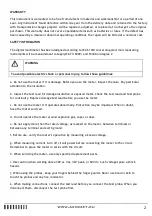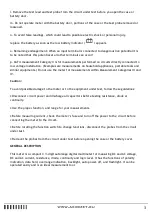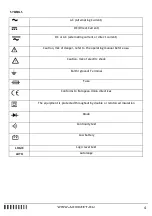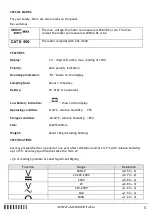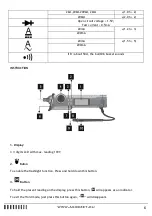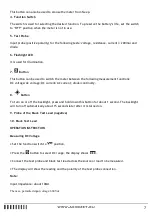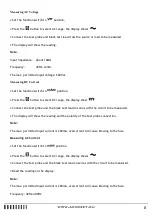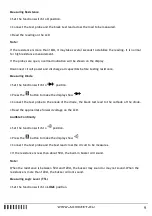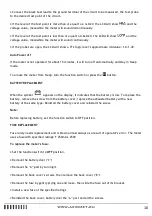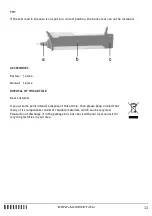
3
l.
Remove the test lead and test probe from the circuit under test before you open the case or
battery door.
m.
Do not operate meter with the battery door, portions of the case or the test probe removed or
loosened.
n.
To avoid false readings, which could lead to possible electric shock or personal injury,
replace the battery as soon as the low battery indicator (
) appears.
o.
Remaining endangerment: When an input terminal is connected to dangerous live potential it is
to be noted that this potential at all other terminals can occur!
p.
CATII-measurement Category II is for measurements performed on circuits directly connected to
low voltage installation. (Examples are measurements on household appliances, portable tools and
similar equipments.) Do not use the meter for measurements within Measurement Categories III and
IV.
Caution:
To avoid possible damage to the meter or to the equipment under test, follow these guidelines:
•
Disconnect circuit power and discharge all capacitors before testing resistance, diode or
continuity.
•
Use the proper function, and range for your measurements.
•
Before measuring current, check the meter’s fuse and turn off the power to the circuit before
connecting the meter to the circuit.
•
Before rotating the function switch to change functions, disconnect the probes from the circuit
under test.
•
Remove the probes from the circuit under test before opening the case or the battery cover.
GENERAL DESCRIPTION
This meter is a compact 3 ½-digit autorange digital multimeter for measuring DC and AC voltage,
DC and AC current, resistance, diode, continuity and logic level. It has the functions of polarity
indication, data hold, overrange indication, backlight, auto power-off, and flashlight. It can be
operated easily and is an ideal measurement tool.


